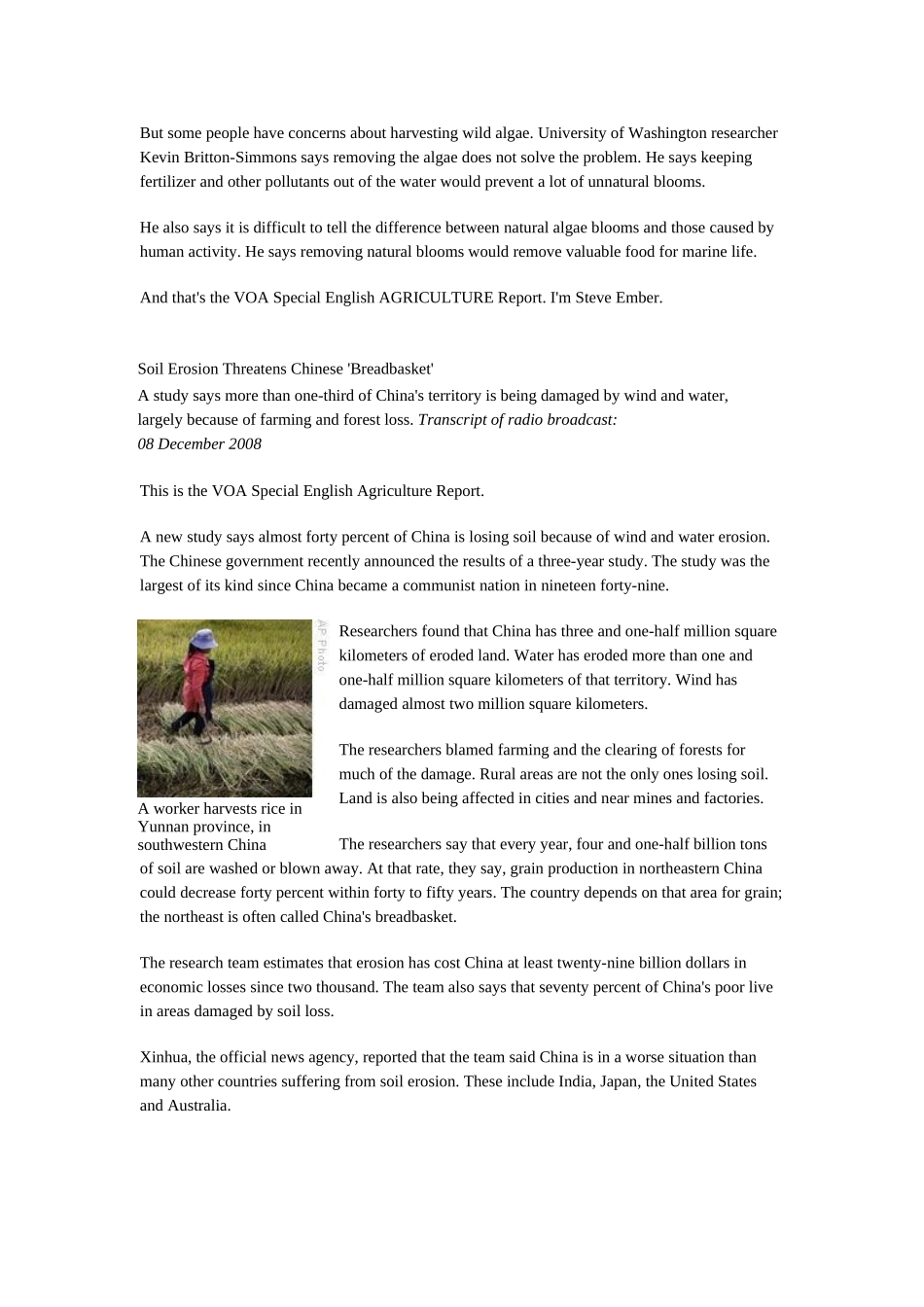Looking for Energy in AlgaeA Seattle company harvests wild algal blooms in search of natural gas and biochemicals. Transcript of radio broadcast: 01 December 2008This is the VOA Special English Agriculture Report.The search for new fuels has led some researchers to algae. Algae is a name for thousands of different organisms. They include single-celled plants as well as kelp and other large plants.Kenneth Bruland is an ocean sciences professor at the University of California, Santa Cruz. He says many experts also consider plant-like bacteria to be a form of algae. These bacteria make food from the sun like plants do.Algae grow quickly and some contain a lot of oils. Most algae-to-energy researchers are growing algae in huge tanks. But one company, Blue Marble Energy in Seattle, Washington, uses algae already growing along coastlines. Workers pump it into bags on a boat. They have to be careful not to suck up young fish or other small creatures.Blue Marble says its work could help prevent harmful algae blooms. A bloom is when a dense area of algae forms and spreads. Some blooms can harm people, animals or the environment.Warmer water can cause blooms, and some scientists think global warming is adding to an increase in large ones. Nutrients from sewage and agricultural fertilizers also help algae grow.Blue Marble is a start-up company with private investors. It also has a contract with Washington state to collect the algae called ulva, or sea lettuce, in parts of Seattle's Puget Sound waterway. In Puget Sound, big blooms of sea lettuce often break down in Dumas Bay. This process of rotting uses up oxygen and kills marine life. And when the sea lettuce washes up on the beach, it smells t...


